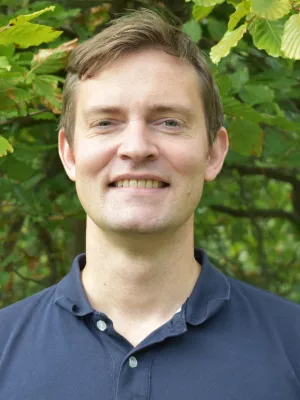
Yann Clough
Professor

Pollinator population size and pollination ecosystem service responses to enhancing floral and nesting resources
Author
Summary, in English
Modeling pollination ecosystem services requires a spatially explicit, process-based approach because they depend on both the behavioral responses of pollinators to the amount and spatial arrangement of habitat and on the within- and between-season dynamics of pollinator populations in response to land use. We describe a novel pollinator model predicting flower visitation rates by wild central-place foragers (e.g., nesting bees) in spatially explicit landscapes. The model goes beyond existing approaches by: (1) integrating preferential use of more rewarding floral and nesting resources; (2) considering population growth over time; (3) allowing different dispersal distances for workers and reproductives; (4) providing visitation rates for use in crop pollination models. We use the model to estimate the effect of establishing grassy field margins offering nesting resources and a low quantity of flower resources, and/or late-flowering flower strips offering no nesting resources but abundant flowers, on bumble bee populations and visitation rates to flowers in landscapes that differ in amounts of linear seminatural habitats and early mass-flowering crops. Flower strips were three times more effective in increasing pollinator populations and visitation rates than field margins, and this effect increased over time. Late-blooming flower strips increased early-season visitation rates, but decreased visitation rates in other late-season flowers. Increases in population size over time in response to flower strips and amounts of linear seminatural habitats reduced this apparent competition for pollinators. Our spatially explicit, process-based model generates emergent patterns reflecting empirical observations, such that adding flower resources may have contrasting short- and long-term effects due to apparent competition for pollinators and pollinator population size increase. It allows exploring these effects and comparing effect sizes in ways not possible with other existing models. Future applications include species comparisons, analysis of the sensitivity of predictions to life-history traits, as well as large-scale management intervention and policy assessment.
Department/s
- Centre for Environmental and Climate Science (CEC)
- Biodiversity
- BECC: Biodiversity and Ecosystem services in a Changing Climate
- Biodiversity and Conservation Science
Publishing year
2017-03
Language
English
Pages
1898-1908
Publication/Series
Ecology and Evolution
Volume
7
Issue
6
Document type
Journal article
Publisher
Wiley-Blackwell
Topic
- Ecology
Keywords
- Bee foraging
- Bumble bees
- Crop pollination
- Ecosystem service mapping
- Landscape ecology
- Natural capital
- Pollination model
- Population dynamics
- Wildflower habitat
Status
Published
Project
- Enhancing biodiversity-based ecosystem services to crops though optimized densities of green infrastructure in agricultural landscapes
Research group
- Biodiversity and Conservation Science
ISBN/ISSN/Other
- ISSN: 2045-7758